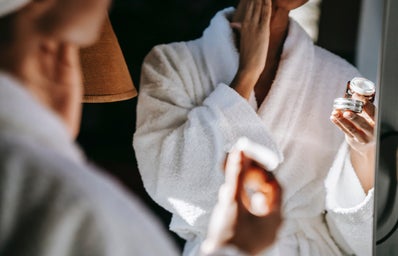Looking for ways to incorporate less wasteful products into your personal hygiene routine? Look no further!
Tip Number One: Simplify
Simplify your hygiene routine by cutting back on the number of beauty products you purchase. Downsizing your collection of hygiene products can free you from buying excess items that you may not need. Be more mindful of the ways in which “personal care” and “beauty” are constantly being marketed. Taking care of yourself is essential, but the concept of self-care has been overly commodified. Before splurging and buying product after product, think about whether or not an item truly serves you. Take a look at all of the products you own and reflect upon your relationship with them. Do you get full use out of them? Or do they lie on the shelf untouched until you decide that they are too old and must be disposed of? From personal experience, I can’t remember a single time that I’ve gotten down to the very bottom of a chapstick or used every last bit of moisturizer before buying another and trashing the old one.
Tip Two: Coconut Oil
Coconut oil is an all-natural product that can be implemented into your beauty routine in a number of ways. It’s likely that you already have this multipurpose ingredient in your kitchen. Utilizing this simple product can allow you to cut down on spending and waste. Its deep moisturizing qualities are perfect for adding hydration to dry areas on your body such as elbows and the heels of your feet. You can also apply coconut oil to the ends of your hair to tame any unwanted frizz, and add moisture to dry or damaged hair. An additional way to get more uses out of coconut oil is to use it as a makeup remover. Warm up the oil in your hands and massage it onto your face to break down any makeup. Makeup remover wipes or pads are not needed.
Tip Three: Sustainable Period Products
For those who have periods, consider switching to more eco-friendly, longer-lasting period products. Menstruation is a process that unfortunately tends to produce large amounts of waste. The average menstruator will generate hundreds of pounds of waste in their lifetime from single-use period products alone. Fortunately, there are several options available that prevent this waste accumulation. Menstrual cups, reusable cloth pads, and period underwear are all effective alternatives to traditional pads and tampons. Some reliable brands to turn to for these products are Thinx, Period Aisle, and OrganiCup. These products can be used for several years, as opposed to one time only, which will save you from the monthly period-related expenses that you may be used to. With that said, don’t feel pressured to start using these products if they don’t work for you! You know what’s best for you and your body. Here at UVM we recently conducted a campus-wide menstrual cup giveaway. Our Eco-Reps program paired up with OrganiCup, a company that believes in providing the public with sustainable, accessible period products. OrganiCup is also dedicated to destigmatizing menstruation. The giveaway was largely successful, and over 1,300 cups were distributed to the student population at UVM.
Tip Four: Shorten Your Showers
Be more conscious of the amount of water you use while showering. Water scarcity is becoming more and more of an issue worldwide. So many people across the globe lack access to clean and safe water. Water is a resource that is considerably overused. According to the Environmental Protection Agency, the average American family uses over 300 gallons of water on a daily basis. 40 of these 300 gallons are set aside for showering alone. To lessen the amount of water wasted while showering, try setting a timer. It can be tempting to linger in the warm water, but this is a sure way to keep you alert and aware. If you typically take ten minutes to shower, aim for seven minutes, and then try decreasing the duration each time you step in the shower. You could also cue up one or two of your favorite songs to keep track of the time you spend showering. Another tactic you can use to save water is to periodically turn off the water while lathering up soap or applying shampoo or conditioner. If you are someone who shaves in the shower, definitely put a pause on the water running, as this can be time-consuming. Turn the water back on when it is time to rinse off.
Tip Five: Homemade Shampoo From Household Products
Making your own personal care products such as shampoo can be a fun, crafty way to reduce your waste while knowing the exact ingredients you’re using on your body. A few ingredients to use in this self-made shampoo that can be found around the house include water, Dr. Bronner’s Pure Castile Liquid Soap, vegetable oil, and essential oils. Combining these ingredients together in reusable containers can leave you feeling clean, and smelling great. Today, many shampoos contain numerous hair thinning ingredients, parabens, dyes, and more hair damaging substances. By making your own shampoo, not only are you practicing sustainability, but you are also ensuring what you use is healthy and fortifying for your hair.
These suggestions might seem overwhelming, but give them a try! You’d be surprised at how easy it is to make these small changes. Shifting your hygiene habits in these ways will be beneficial to you and to the planet.
Written by UVM Guest Writer: Nora Looney
*Edited by Annie Stibora.


